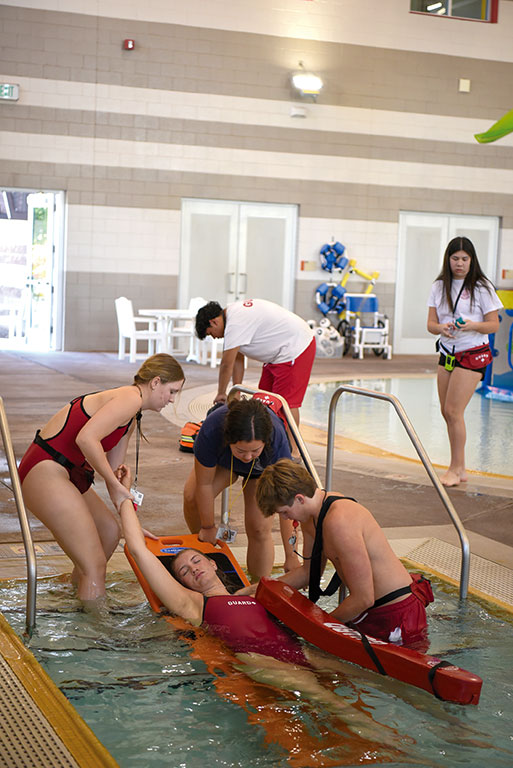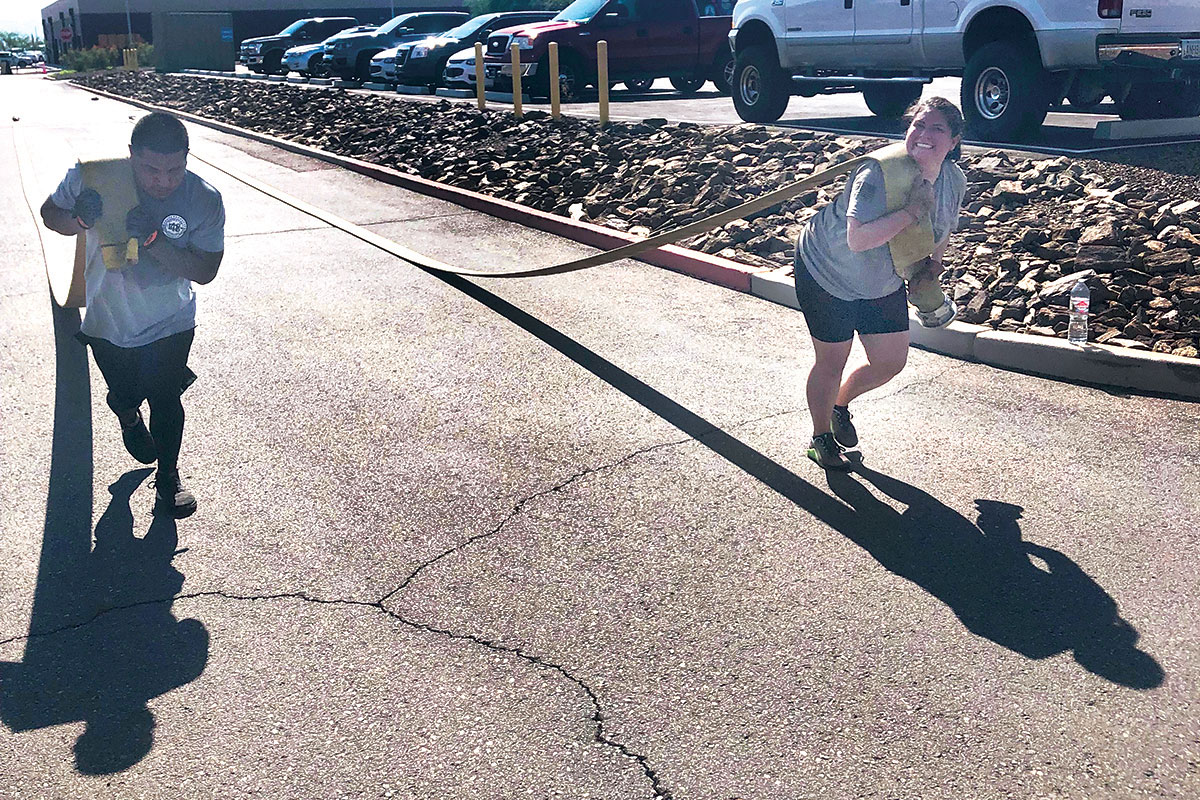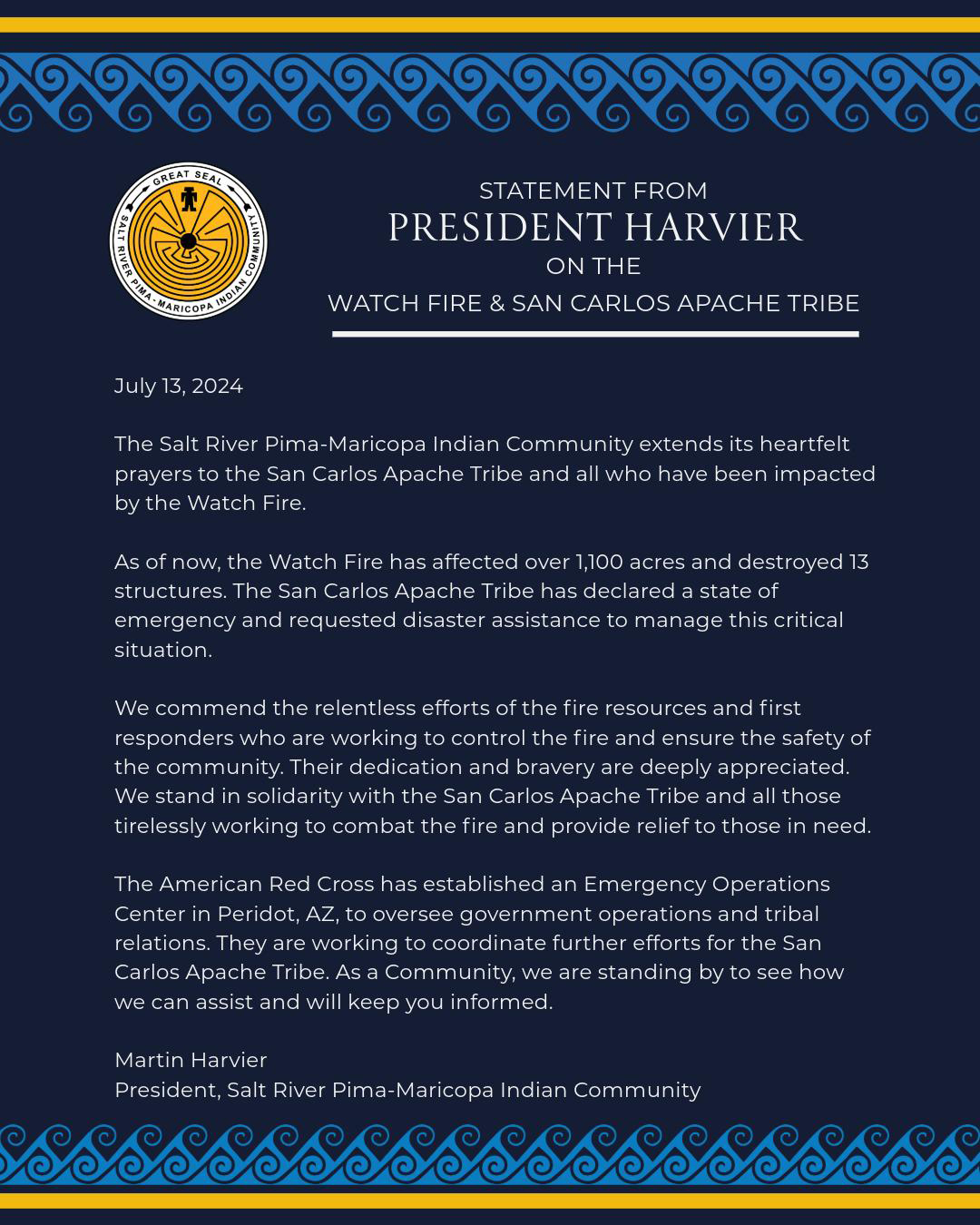VIEWS: 1917
June 7, 2024Drowning Prevention Starts with Preparation
By Kari Haahr
As the weather heats up, there is no better time to start thinking about how to prevent accidental drowning. To stay ahead of the risks, the Salt River Fire Department utilized their quarterly training to conduct a drowning simulation in collaboration with the Aquatics team at the Way of Life Facility (WOLF). For this training, the simulation was designed to prepare the team to respond to a pediatric drowning.
On May 4, SRFD staff began the day with a lecture at Fire Station 294. Inside the classroom, EMS Training Captain Casey Kingry highlighted what goes into saving a life when a drowning takes place. He shared facts and risk factors, such as that drowning is the leading cause of death in children ages 1 to 4 and that, among adults, men are more likely to drown than women. The group discussed specific features in the Salt River Pima-Maricopa Indian Community that pose a drowning risk, such as the canals, the river, and public or private pools, and the different ways to approach each situation when the call comes in.
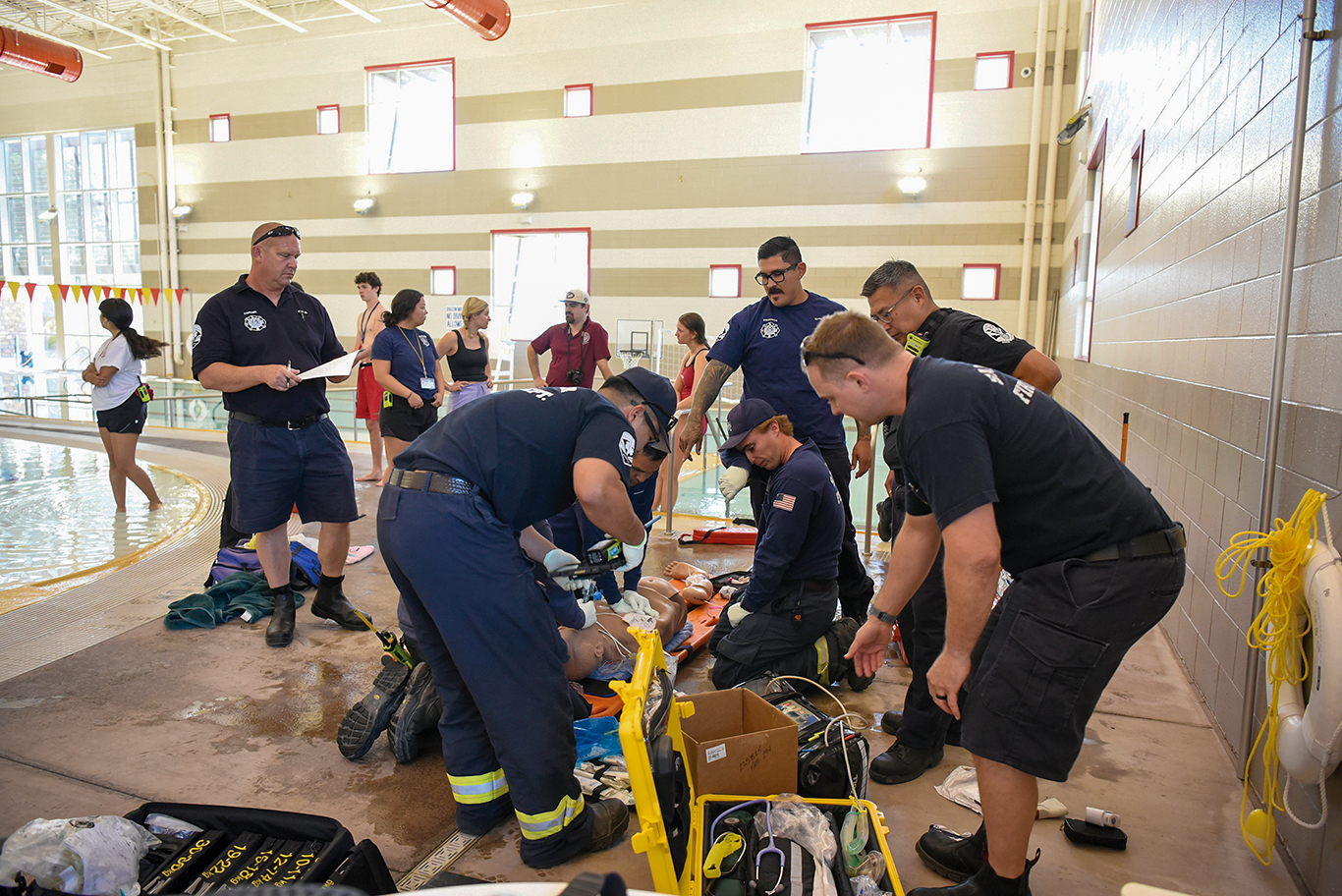
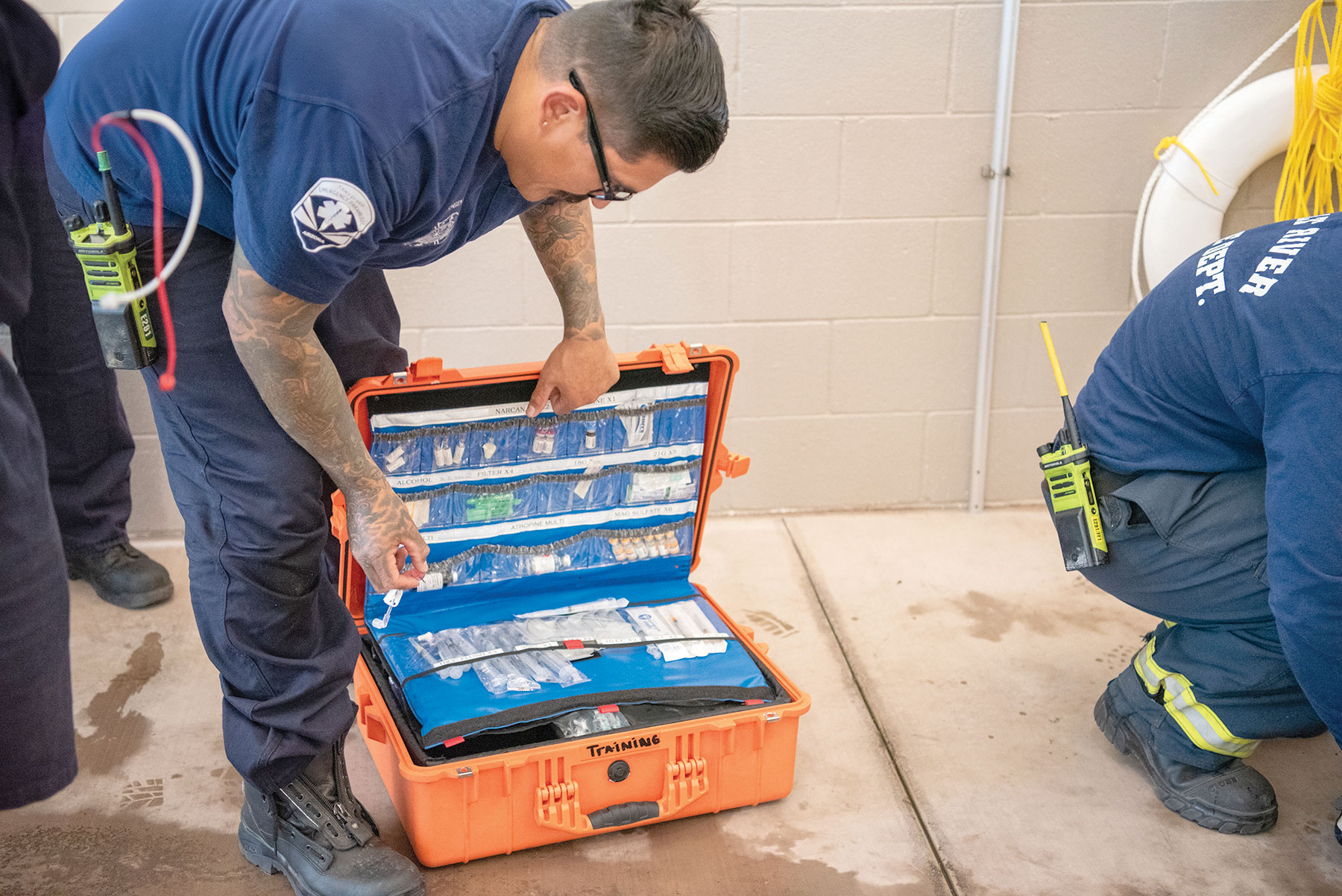
Responding to a drowning can call for additional interventions beyond CPR.
For the paramedic team, there is more to combat in a drowning than getting the individual breathing. Once a person has lost enough oxygen, other measures must be taken to get them back to stable condition and prevent further decline.
After the lecture concluded, staff barely had time to stretch their legs before the simulation began just down the road at the WOLF.
A splash, a whistle and another splash, and the Aquatics team was in action saving the “victim” with all hands on deck to get them safely out of the water. Once on dry land, the victim was swapped for a CPR manikin, on which the lifeguards began doing compressions.
Outside, a WOLF staff member waved a large white flag with a red cross to indicate to the incoming fire crew where the emergency was located. The team quickly moved in and took over from the lifeguards, following the steps they were trained on and implementing therapies appropriate for an 8-year-old child. Some of the challenging factors were communicating compressions and calculating how much medication to give to the victim based on their size and weight. An example discussed in the training was that there are some tools and items that are used based on a person’s age rather than their size, such as an intubation tube, which should fit any victim in a specified age range regardless of their weight.
After the make-believe victim was stabilized, the group gathered to discuss their response and what happened during the incident. For many, the challenge was communicating with one another about what each responder was doing at certain points, but the practice of swiftly taking action and working together revealed that, although it’s difficult, saving someone from drowning is absolutely possible.
The collaboration that went into making the training a success from all angles is exactly the key to saving a life. It starts with one person, but everyone working together can prevent a tragedy. From the lifeguards and the person who identifies the drowning to the dispatchers and the EMTs, it is everyone’s responsibility to keep each other safe around water.

